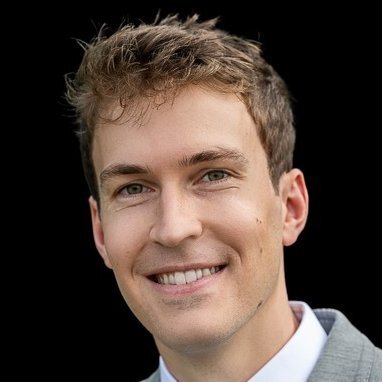Minimizing Cell Burden
By Niko McCarty
I. Molecular Burden
Biochemistry textbooks often depict cells as spacious places, where molecules float in secluded harmony. But cells are dense and crowded; a bit like molecular burritos, according to Michael Elowitz, a biologist at Caltech.
Roughly three to four million proteins jostle around inside a single E. coli bacterium, which has an internal volume 50 billion times smaller than a drop of water. A typical enzyme within this crowded cell collides with its substrate 500,000 times each second. When bioengineers manipulate life, they must also consider how their modifications will impact everything else within the cell, too—for everything in the cell is connected to everything else.
In 2000, Elowitz published one of the first synthetic gene circuits—called the “repressilator”—with his mentor, Stanislas Leibler. A gene circuit is made from RNA or proteins that interact with one another, enabling cells to perform logical functions. The repressilator was crafted from just three genes, each of which encoded a protein that repressed another protein to form an inhibitory loop. One of these proteins was fused to a green fluorescent protein so that, as the protein levels rose and fell, the cells flashed green—on and off—in 150 minute intervals.
As synthetic biology advanced, and its tools grew sharper, synthetic gene circuits swelled in size. In 2016, a paper in Science reported an engineered circuit made from 55 different sequences assembled into 11 genes; among the largest gene circuits yet assembled in a single cell. Building significantly larger synthetic gene circuits will require careful consideration of the finite resources available to cells.

More burdensome genes, carried over more cell divisions, are more likely to mutate and break.
After all, cells are not empty vessels that have evolved to do our bidding. When we engineer an organism, coaxing it to make new proteins or molecules, we are imposing a molecular burden upon it. Typically, burdensome genes are defined as those that “impose a high enough energetic burden to be opposed by selection if they do not confer sufficient added benefits.” Any genes added to a cell must compete for cellular resources—energy, ribosomes, and RNA polymerases—that may diminish the cell’s ability to carry out other functions; to grow, metabolize, and divide.
A recent study in Nature Communications measured the molecular burden imposed by 301 different plasmids; fewer than 20 percent of them caused E. coli cells to grow more slowly. But surprisingly, some of the most burdensome plasmids were also the simplest—a plasmid encoding red fluorescent protein—and nothing more—caused a 44% reduction in growth rate.
The study is intriguing, in part, because its dataset could provide insights into why some genes, once expressed, cause cells to grow more slowly. More importantly, though, this study reveals that there is still so much we don’t understand about biology, or toxicity, or how to ease molecular loads as we strive to engineer life in increasingly sophisticated ways.
II. Competition
Cells have finite resources. Insert a synthetic gene into a cell, and several things quickly happen.
First, the gene is transcribed into RNA by an enzyme called RNA polymerase. Then, the RNA molecules are translated into protein via ribosomes, large protein-RNA complexes made from dozens of interlocking components. A typical E. coli cell contains about 3,000 RNA polymerase molecules and 30,000 ribosomes. Exogenous genes pull some of these enzymes away from other parts of the cell. And, for reasons that are not fully understood, cells burdened with recombinant DNA do not upregulate their production of RNA polymerase or ribosomes to compensate for the increased load, according to a 2020 study.
Although the term “burden” typically refers to resource limitations—be they metabolic, transcriptional, or translational—it is often experimentally difficult to untangle from toxicity. A thorough investigation is often needed to tell whether a cell is growing slowly due to burden or toxicity, because the outcome—slow growth—is the same.
Some proteins that are normally non-toxic also become toxic when expressed above a certain threshold. For a 2018 study, researchers expressed 29 different enzymes in yeast. All of the enzymes have well-known mechanisms and are non-toxic at normal levels. Some of the enzymes became toxic in the yeast, however, because they “aggregated together, they overloaded a transport system that [took] them to a specific cell compartment, or [they] produced too much catalytic activity.”
A cell faced with excess burden or toxicity really only has one way out: To mutate and break the troublesome genes. A single milliliter of liquid culture holds as many as one billion E. coli cells. If just one of those cells mutates the burdensome genes and breaks its function, then that cell will grow more quickly than its neighbors. The mutated cell’s progeny will eventually take over the entire population. The more burdensome a genetic sequence, the more likely a mutant will appear and take over.
Remember that Nature Communications study that I mentioned earlier? Well, the authors built a simple mathematical model to predict the correlation between different levels of burden and “population takeovers” when cells are grown in different sized containers. A plasmid causing more than a 30% reduction in growth rate, for example, is likely to result in a “mutant takeover” when the cells are grown in even a small container, such as a flask.

Simulations of how different levels of burden (the red lines) and different mutation rates per cell division (μ) influence the failure rate of engineered cells grown at different volumes.
Collecting the data to build this model was straightforward. The authors placed each of the 301 different plasmids into E. coli cells, and then measured how much each plasmid slowed down their growth rates. A plate reader machine measured the cloudiness of each population over time; a proxy for cell growth. The authors also measured growth rates for E. coli carrying one of five different plasmids that imposed known levels of burden. These controls were used to normalize growth rates between experiments.
Of the 301 plasmids tested, just six caused cells to grow more than 30% slower than unaltered cells. A further 19 plasmids caused cells to grow more than 20% slower. In total, the authors found 59 plasmids that caused measurable changes to bacterial growth rates.
Genes expressed from constitutive promoters (meaning they are always “on”) were 2.9 times more likely to be in the burdensome set of 59 plasmids. And plasmids containing a strong ribosome binding site (the part of an mRNA strand where ribosomes bind and kickstart translation) were 2.1 times as likely to slow E. coli growth, compared to plasmids that include weaker RBS variants.
III. Build Bigger
If this study’s results were distilled in a single sentence, I think it would be this:
Genetic sequences inserted into a cell do not usually cause excess burden; but when they do, it is often for reasons we don’t fully understand.
Why, for example, is a plasmid encoding red fluorescent protein so burdensome? Plasmids encoding YFP and GFP also caused 29.5% and 27.1% reductions in growth rate, respectively. A plasmid encoding a chloramphenicol antibiotic resistance gene—and nothing more—caused cells to grow 33.4% slower. Molecular mechanisms explaining these growth defects are often unclear, or completely absent.
At Asimov, one of our primary applications involves engineering Chinese Hamster Ovary (CHO) cells to make therapeutic proteins, like monoclonal antibodies. This particular type of cell, originally derived from animals smuggled out of China in 1948, are used to make nearly 90% of all therapeutic proteins.

The most burdensome plasmids measured in the study.
In our hands, most therapeutic antibodies can be expressed well by optimizing the genetic design or bioreactor process. In many cases, we’ve engineered CHO cells to make more than 10 grams per liter of antibodies without causing any noticeable growth defects on the cells. But other times—and for reasons we don’t fully understand—engineering CHO cells to make certain therapeutic antibodies imposes huge burdens or toxicity. Debugging these cases is an interesting exercise on its own. The root cause is often mysterious, but in other cases we can detect hallmarks of endoplasmic reticulum (ER) stress, which suggests protein misfolding or aggregation in the cell.
Fortunately, there are steps we can take to reduce molecular burden or toxicity.
Codon optimization is one option. This is when scientists convert the DNA sequence from one organism into codons “preferred” by another organism, without altering the order of amino acids in the final protein. In the lab, we have tested various codon configurations to find those that slow down the ribosome’s movement, thus giving proteins more time to fold and reducing toxicity.
Another way we solve this problem is by balancing the expression of genes. Antibodies are made from proteins—called heavy chain and light chain—that come together to make a Y-shaped molecule. If one of these chains is expressed at a much lower level than the other, it can become rate-limiting in the formation of the antibodies. At the same time, if the “excess” chain is the antibody heavy chain, it can float around the cell and cause toxicity. Another way to reduce burden is to integrate genes directly into the host genome, rather than using multi-copy plasmids, such that only one copy of the genes exist and they don’t consume too many cellular resources.
A more complicated approach is to engineer cells with incoherent feedforward loops, or IFFLs, to mitigate burden caused by gene expression. Such gene circuits are designed to dampen mRNA levels when a gene’s expression diminishes the cell’s ability to carry out other functions.
A balance must be struck, however. It is good to reduce burden, but not at the cost of antibody production. Molecular burden, toxicity, and economics are all valid things to consider.
Most of these strategies are also akin to using Tylenol to treat a cold—we may get the outcome we’re after (less burden), but only because we don’t understand how to solve the problem at its core. It is only by peering deeper into living cells, and untangling their intricate complexities, that we begin to understand what goes wrong when we manipulate them.
In this case, as in many others, greater basic science research will enable more sophisticated engineering.
Join us or subscribe for updates.
By Niko McCarty
Thanks to Rachel Kelemen, Alec Nielsen, Ben Gordon, Kate Dray, Kevin Smith, Chris Voigt, and Arturo Casini for help with this essay.
Image Credit: Centers for Disease Control and Prevention/PA




